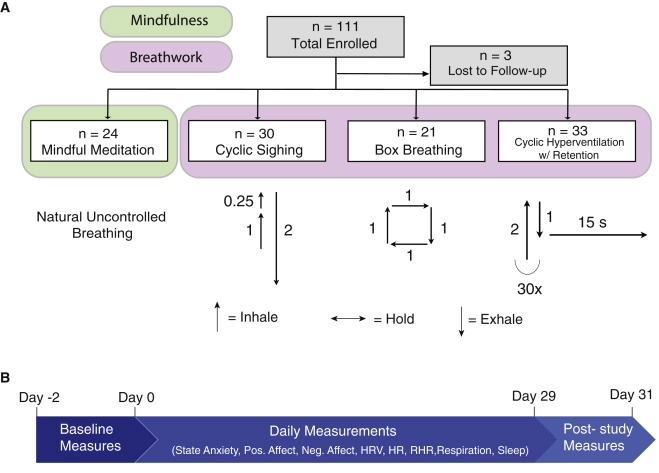
Controlled Breathwork and Mindfulness Meditation, both ancient practices, have recently garnered much attention as tools for managing stress and elevating mood.
Eastern countries practiced breath control to enhance health for thousands of years. For example, pranayama practice, a yogic form of breathing often performed with yoga and meditation, is performed for spiritual and wellness reasons. The many reported benefits of these breathwork practices and the increased awareness of holistic healthcare approaches in the West have gotten medical researchers’ attention.
What was studied?
These practices have many variations, and scientists have begun to test the effectiveness of each.
Researchers at Stanford University published a remote, randomized, controlled study in Cell Reports Medicine titled Brief structured respiration practices enhance mood and reduce physiological arousal comparing three types of Breathwork with Mindfulness Mediation. A total of 108 subjects were divided into four groups. Three groups practiced a form of Breathwork, while the fourth group practiced Mindfulness Meditation. All participants practiced for approximately five minutes once per day for one month.
The three types of Breathwork studied were:
- Physiological sighing – Length of exhale longer than the inhale ( sharp two-step inhale)
- Box Breathing – Equal length inhale, hold, exhale, hold
- Cyclic Hyperventilation – Length of inhale longer than exhale

What did the researchers learn?
The study’s goal was to evaluate each group for improved mood and anxiety along with reductions in physical arousal ( respiratory rate, heart rate, and heart rate variability). After analyzing the results of these measures, the researchers found that exhale-focused physiological sighing showed the most significant improvement of all three breathwork types and exceeded the effectiveness of Mindfulness Meditation.
The researchers considered the study preliminary as a way to test the feasibility of the methodology. They are pleased with the results and are now planning for a larger clinical trial. Some notable limitations of the study are the small population size, the short duration (1 month), and the lack of automatic timestamping of self-reported surveys. Perhaps most important was the lack of follow-up monitoring to determine if any noted changes had long-term effects.
These limitations and the short 5-minute long practice sessions raise questions about which practice will provide the most long-term benefits, but it should be noted that the results clearly show that adopting any of these practices for the long term will result in positive health benefits.
This post first appeared in Ruminations


